Breathers: features, models, selection, installation
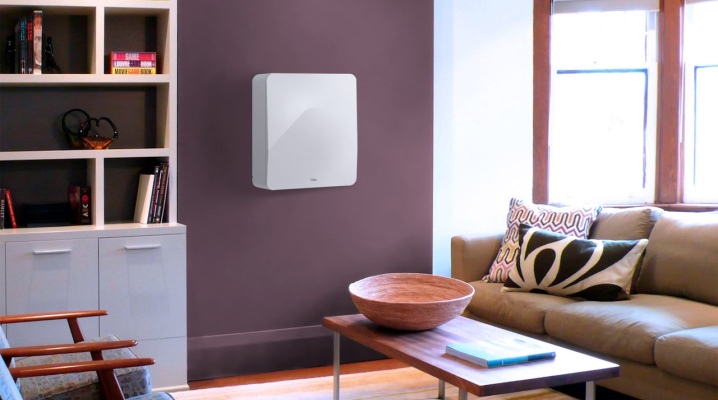
Unfortunately, the air in city apartments these days leaves much to be desired. However, for those people who are worried about their health and the condition of their loved ones, there is a way out - today the industry offers a large selection of "smart" devices that are responsible for creating a favorable indoor climate. One of them is the breather.

Purpose and principle of operation
Breezer is a type of climatic equipment, he is responsible for the intake of air flow from the street, its humidification, cleaning and output to the living space. Thus, even with the windows closed, airing, washing the air, removing fluff, pet hair and unpleasant odors from it is carried out.


Its design consists of several elements:
- external valve - when the device is deactivated, it closes and thereby prevents outside air from entering the apartment;
- filter system, the main function of which is to retain dust, as well as debris and pathogenic microorganisms;
- fan - is responsible for the flow of air from the street into the house;
- type of control that ensures the functionality of the entire breather as a whole;
- heater - helps to heat the outside air so that it enters the apartment already warmed up;
- the remote control is a convenient device that allows you to control the structure from anywhere in the room.


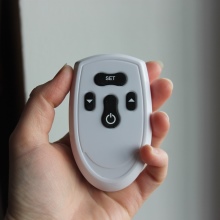
The breather mechanism is absolutely nothing difficult. First, through the air intake with the help of a fan, the air masses enter the unit, after which they pass through the filter system and the humidifier, where they are cleaned. Then the air flow enters the heater, where it is brought to a comfortable temperature for a person, and from there it is released into the room.
It is difficult to overestimate the relevance of breathers. Any living creature, including a person, inhales oxygen and exhales carbon dioxide, thus, sooner or later, the concentration of carbon dioxide in a closed room is exceeded. Inhalation of such air has the most adverse effect on the body, causes a decrease in immunity, leads to a weakening of physical and mental activity, causes depression and drowsiness.

The easiest way to get fresh air is to always keep your window open to the outside. However, this method is not very effective. Firstly, to achieve the result, the window must be open all the time, and if it goes out onto the street, then the apartment will be quite noisy. Secondly, in the cold season, drafts cause colds, in addition, due to unregulated air exchange, households freeze. In addition, fresh air is far from always clean; toxic substances (automobile exhaust gases, emissions from factories and plants) enter the apartment along with it.

The best option for a city apartment would be the installation of a full-fledged ventilation system, but the problem is that it can be installed only at the stage of a major overhaul of the apartment, since the work requires lowering the ceiling height. Usually, installation of such structures is quite expensive... Such expenses are justified only in cases where the area of the treated premises exceeds 100 sq. m. In all other cases, it is better to use fresh air ventilation.To do this, a breather should be installed in each living space.


Differences from recuperator and air conditioner
Many users believe that a split system or air conditioner can replace a ventilator, since it is able to warm and cool the air flow, therefore, in the summer season, it makes sure that the inside of the apartment remains cool, and in winter, on the contrary, a warm temperature background is established. But, when comparing the mechanisms of operation of these devices, it becomes clear that their functions differ in many respects... So, the breather launches fresh air from the street into the room, and the air conditioner only uses the air masses that are already inside - you must agree, this is a rather significant difference. Despite the fact that air conditioners and split systems have an external unit, its function does not include the supply of air inside the house. As a result, the temperature of the air masses in the house may decrease or increase, but this air cannot be called fresh.

The air conditioner does not solve the problem of renewing air masses, and the breather does not allow stuffiness, but at the same time it will not be able to lower the air temperature - its task is exclusively to heat it. It turns out that it is not entirely correct to choose between a split system and a breather - these devices do not duplicate tasks and functions, but at the same time they harmoniously complement each other - one launches clean fresh air into the room, while the second brings it to the required temperature level.


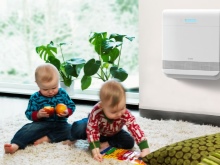
The recuperators are characterized by a similar operating principle. They are household ventilation devices that provide heating of the supply air using the thermal energy of the exhaust exhaust stream.
The principle of operation of such structures is that air flows are passed through a heat exchanger. Moving through its plates, the heated exhaust air contributes to their heating, and they transfer thermal energy to the cold supply flow. As a result, warm cleaned air enters the room.

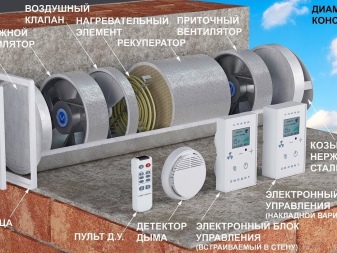
The creators of recuperators position them as an ideal solution for the home, but in practice the situation is much more complicated, since the operating temperature is limited to -15 degrees. Moreover, for some models the admissible minimum is +5 degrees, and in the conditions of the overwhelming majority of Russian regions, this means that most of the winter time the recuperator will work at the limit of its capabilities or be completely idle. Besides, user reviews indicate that in an urban dwelling in apartment buildings, the equipment is ineffectivebecause it cannot cope with the pressure of the ventilation ducts.
Thus, recuperators do not create a noticeable beneficial effect, therefore, for the owner of the living space, there is no other choice but to purchase a breather with optimal technical parameters.
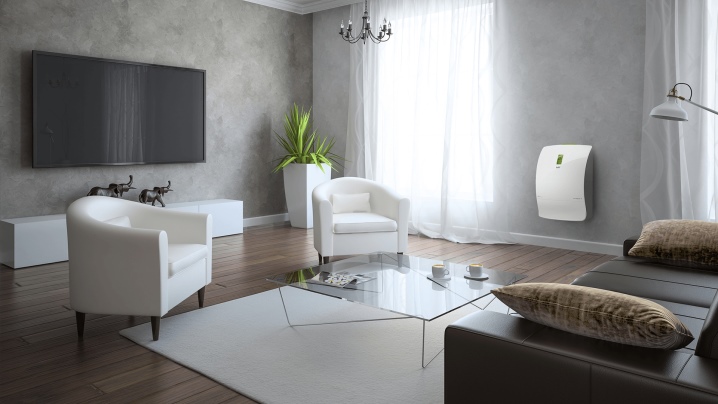
Rating of the best models
When choosing a breather, it is better to give preference to trusted manufacturers. To date, the installations of the following companies are considered to be of the highest quality.
- Tion. A domestic manufacturer that is engaged in the production of climatic equipment that contributes to the creation of a favorable microclimate in residential premises. Tion breathers are in great demand along with air washers from this brand.

- 2VV. The company began its work in the 90s. During their operation, these ventilation units have gained popularity in many European countries due to the highest quality and the use of the latest production technologies. All manufactured products comply with the current international standards.

- Ballu. One of the most famous manufacturers of climate control equipment in the world, and they produce all their products for both domestic and industrial use.Especially for our country, the company produces breathers adapted to the harsh climate of Russian regions.

- Daikin. Japanese manufacturer of air cleaning equipment, which is considered one of the leaders in the production of HVAC equipment in the world. The production is based on our own technological developments. All equipment has a three-year warranty.

How to choose?
When choosing a breather, first of all, you need to be guided by the characteristics of the dwelling, the number of residents permanently in it, as well as the climatic conditions of the region and the ecological situation in the area. Pay close attention to a number of fundamental factors.
- The simplest ventilator, that is, a breather without heating and filters, is optimal only for those apartments and private houses in which no more than 2 people live.
- For a family of 3 or more people, such a valve will no longer be enough. In this case, it is better to pay attention to a more powerful breather with a capacity of 90-120 m3 / h.
- If you plan on using the breather in the wintertime, it's best to give your credit to the heated models.
- Be sure to evaluate the air quality around your home before choosing. Whether you live along highways, in a busy city center or in an industrial area, it makes sense to opt for the highest powered models.
- For use outside the city, one or two built-in filters will be enough.In the city, as well as in houses where allergy sufferers live, breathers with a highly efficient HEPA filter will be the best solution.

Installation rules
When installing the breather, it is very important to determine the correct location for its location. The best option would be the outer wall of the room or balcony. In all other cases, additional ducting will be required, and this will already be a non-standard solution that will require an individual design project. If your apartment already has a hole made by the developer for the KIV valve, or you made it yourself earlier, the place for your breather has already been determined. In this case, you need to assess whether you have enough space to install the equipment. As a rule, the openings under the KIV are located almost under the very ceiling, therefore it is important that a distance of at least 50-60 cm is maintained from the breather grille to the ceiling surface.

If there is no finished hole, then drilling is indispensable. First you need to measure the width of the wall, that is, that section of the wall that separates the corner from the window slope. If the obtained value allows, the breather can be installed anywhere, but it should be located not lower than 50 cm from the ceiling and lower than 5-6 cm above the floor.
This is a very important rule, because if air comes out and immediately gets close to any other surface, it immediately begins to creep along it, and thus some areas in the room remain without the movement of air masses. Accordingly, the air will be poorly renewed.


If you plan to place the breather behind the cabinet, you must leave at least 20 cm from the end to the top cover of the device, otherwise the cabinet will impede the efficient maintenance of the unit. The ideal option would be to mount the breather in the middle of the wall at a height of 140-160 cm from the floor. In this case, the air coming out of the nozzle will mix with those air masses that are already in the room.
Alternatively, you can try hanging the breather under a windowsill near the battery. However, in this case, it is necessary to carefully monitor that the window sill does not impede the release of air from the device.
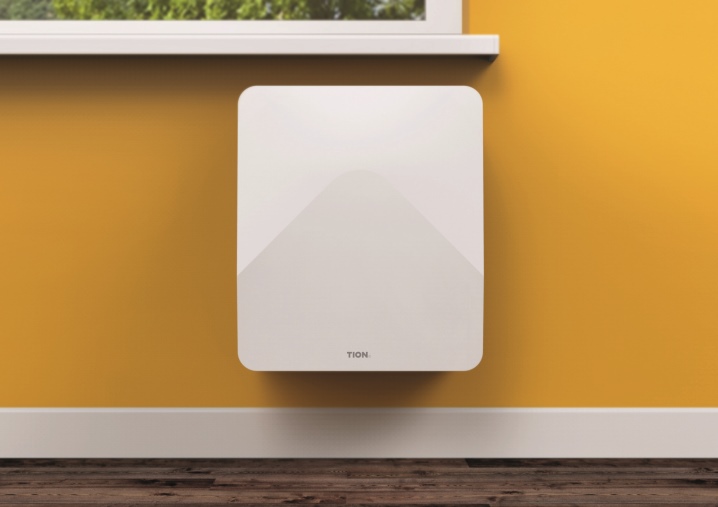
Review overview
After analyzing consumer reviews of breathers left in a variety of sources, it can be noted that they are mostly positive.
Users note the following advantages of these devices:
- automatic system for heating air masses;
- highly efficient multilevel filtration system;
- maintaining a constant supply of fresh air in the house;
- ergonomics and compactness;
- ease of installation and use of the device;
- quiet mode of operation;
- the usefulness of air purification for the elderly, children, as well as people suffering from allergic diseases and pathologies of the respiratory system.



There are also some disadvantages. The main one is the high cost of the device. In addition, there is no air cooling option in breathers.
For information on how to install the Tion breather, see the next video.













The comment was sent successfully.